Wood, stone and clay are the oldest building materials. Long before cement and concrete, people built shelters out of stone and wood. Clay was used to hold them together but also to insulate the house. Skilled craftsmen used construction techniques that are still used today to build traditional eco-friendly houses. About timber and traditional building techniques I will tell you more.
I was talking to a friend of mine the other day about the old houses made by craftsmen, who worked only by instinct and experience, without having learned any skills at school. Mihai, a construction engineer with a lot of experience both at home and abroad, told me how impressed he was by the way these craftsmen built. From him I learned a few ways to use wood using traditional building techniques. And it's not about wooden houses, it's about using wood to build houses.
How a warm floor can be built using traditional techniques
The big problem with a house "on the ground" is the always cold floor. To keep your feet from getting cold you should have underfloor heating. However, there is a way of construction that can achieve a parsing with an acceptable and constant temperature.
The house will not have a classical foundation but one made of natural materials. Use ballast as a drainage layer and river stone. On top of these is washed or crushed stone and finally slag. All these layers will provide drainage and together form the foundation.
Wooden beams in the form of a frame - the sole of the house - are placed over the foundation. The frame is divided into spaces 60 cm wide by other wooden beams. Treated sawdust is placed between them for insulation. Treatment is mandatory to remove insects that can endanger the wood (cari).
Perpendicular to the beams are knocked the wooden cabinets that are the support for the floorboards. The result is a pleasant-looking and very well insulated floor.
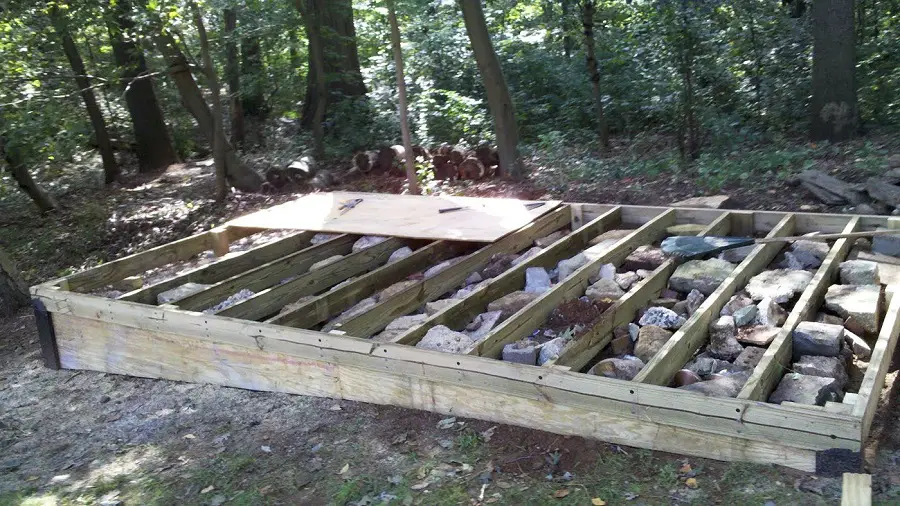
Ceiling construction on wooden structure, insulated with natural materials
The ceiling can also be built and insulated in the traditional way, using wood and clay as building materials. In general, the levels of a house are separated with a concrete floor. This weighs down the house, putting quite a lot of stress on the structure.
But it can be built with wood. Using grinzi Make a frame from oak, supported on the supporting battens exactly as above. On the outside of the beams, on the side facing the room, wooden slats of 2/2 cm are knocked, not side by side but with a slat break - that is, one slat on and one slat off. The joists are insulated between the joists with clay tiles. What are they? Building clay mixed with dry straw and made in the form of rolls. Clay is a very good insulator, both thermal and sound.
On the slats on the room side, the rabi net is fastened and plastered with mortar or a thinner clay and after drying it is varnished.
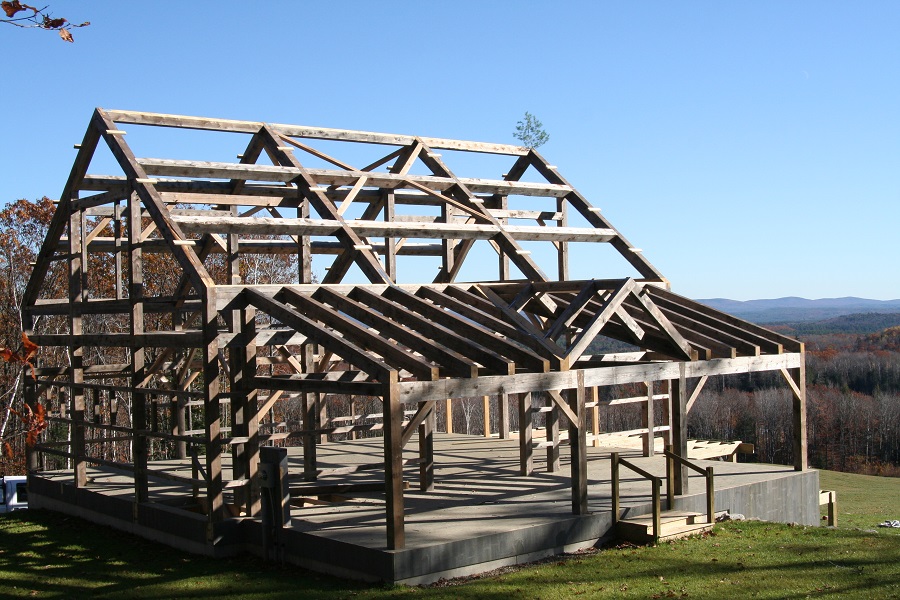
Traditional construction of house walls on wooden structure
Now that we've done the traditional foundation and ceiling, let's see how the walls are traditionally made on a wooden structure. Vertical posts are erected at the corners on the oak beams that form the floor of the house. Posts are also placed next to doors and windows. The top end of the posts is attached to another wooden frame, that of the ceiling.
In order to have a solid structure, each square or rectangle formed by the vertical and horizontal beams is reinforced with oblique beams that join the opposite angles. On either side of the vertical beams, i.e. on the outside and inside of the house, horizontal wooden slats are beaten with a break between them. This forms a kind of hollow wall which is then filled inside with clay mixed with straw.
Preparing clay for filling walls
The clay was mixed with straw right next to the house and in order to mix it very well it was "played" standing by women and children. Among them was a skilled craftsman who knew the consistency of clay to get the best results. From time to time he poured a little water into the mixture, which was then mixed with his feet.
When it had reached the right consistency, the clay was put inside the wooden wall and beaten very well so that no gaps were left. Everything had to be done quickly because the mixture did not stay at the optimum consistency for long.
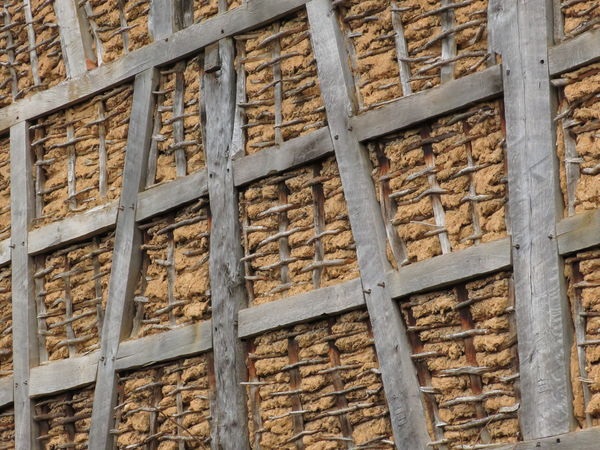
Exterior wall finishing
After the walls were loaded with clay, slats were pounded on the outside at a 45º angle. Short slats were pounded one row to one side and the next row to the other side. All the way up were several such rows which stabilized and stiffened the house very well. Between the slats was filled with thin clay, like plaster, and then plastered or painted. Such houses are common in the Suceava - Rădăuți - Vatra Dornei area. In some houses, the clay has fallen over time and so you can clearly see the clay beaten in one direction or another.
The wood-to-wood joints made the house more flexible and resistant to earth movements and the natural treatment made the wood very durable
Now, even if they are made in the traditional way, metal nails or other such joining methods are still used. In the past, however, the joints were all wood to wood - swallowtail, nut and shank - and the nails were also made of wood.
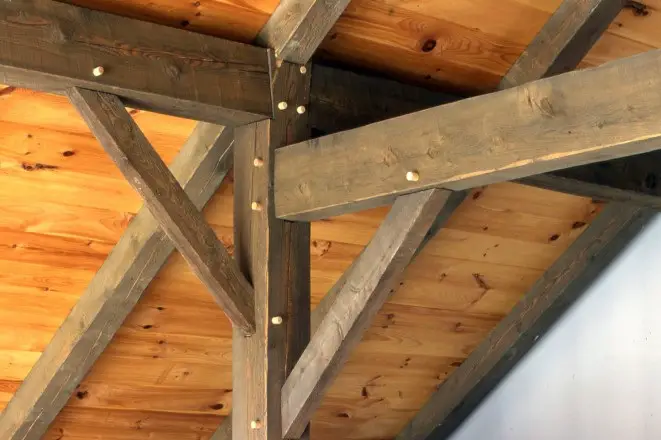
Wood was also treated naturally. The wood from the sole of the house was burned well to make it more resistant to water, fire and insect attack. The exposed wood, after being burned, was oiled to give it even better protection against damp.
The wood used in the past for construction was hard and heavy, with a high tannin content that made it resistant over time. It was used in particular oak tree, larchand in the south, where it was plentiful, acacia. It was the classic timber for strength structures, and was even used green (unhewn). Such constructions have stood the test of time, and if it was torn down, healthy wood was recovered which could be reused in other constructions.
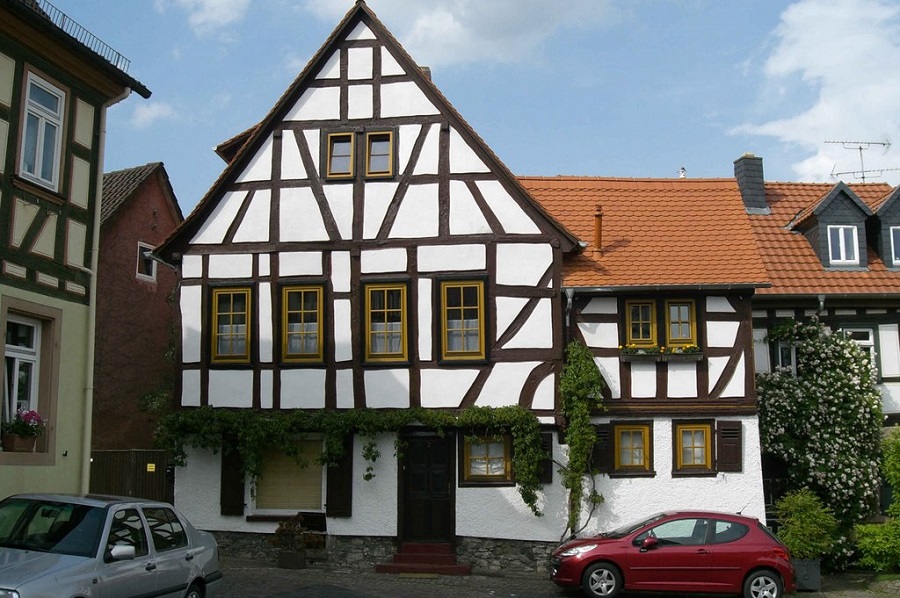
We are slowly realizing that not everything that was in the past was bad and not everything that is modern material is necessarily good. I believe that the best thing would be not to lose anything of what was and what is, combining old, sometimes forgotten techniques with modern building materials.
























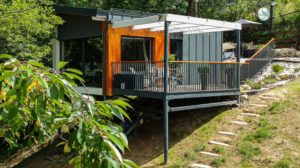


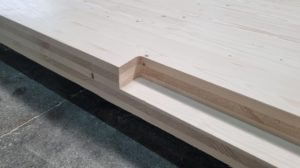
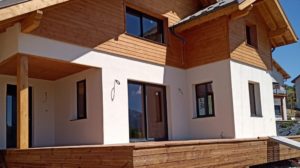
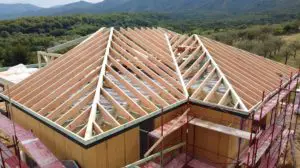
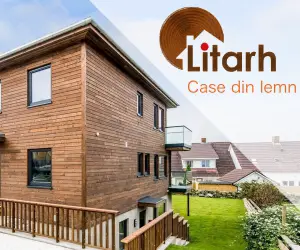

Woodworking is a gift from God to those chosen to practice it.
[...] 2 in the attic. Wood is also perfect for making a cottage on wheels or a traditional country house. Wood gives builders, but especially architects, the opportunity to [...]
[...] digital reference (https://www.revistadinlemn.ro/2018/02/19/lemnul-unul-dintre-cele-mai-vechi-materiale-de-constructii/) offers the desires, step by step, the scheme of a modern wooden construction, but perfectly [...]
Interesting and useful! Congratulations Mrs Radu! it would be a pity to lose these traditional techniques especially as these techniques have received the confirmation, the certification of time so they are clearly very good.
Thank you!